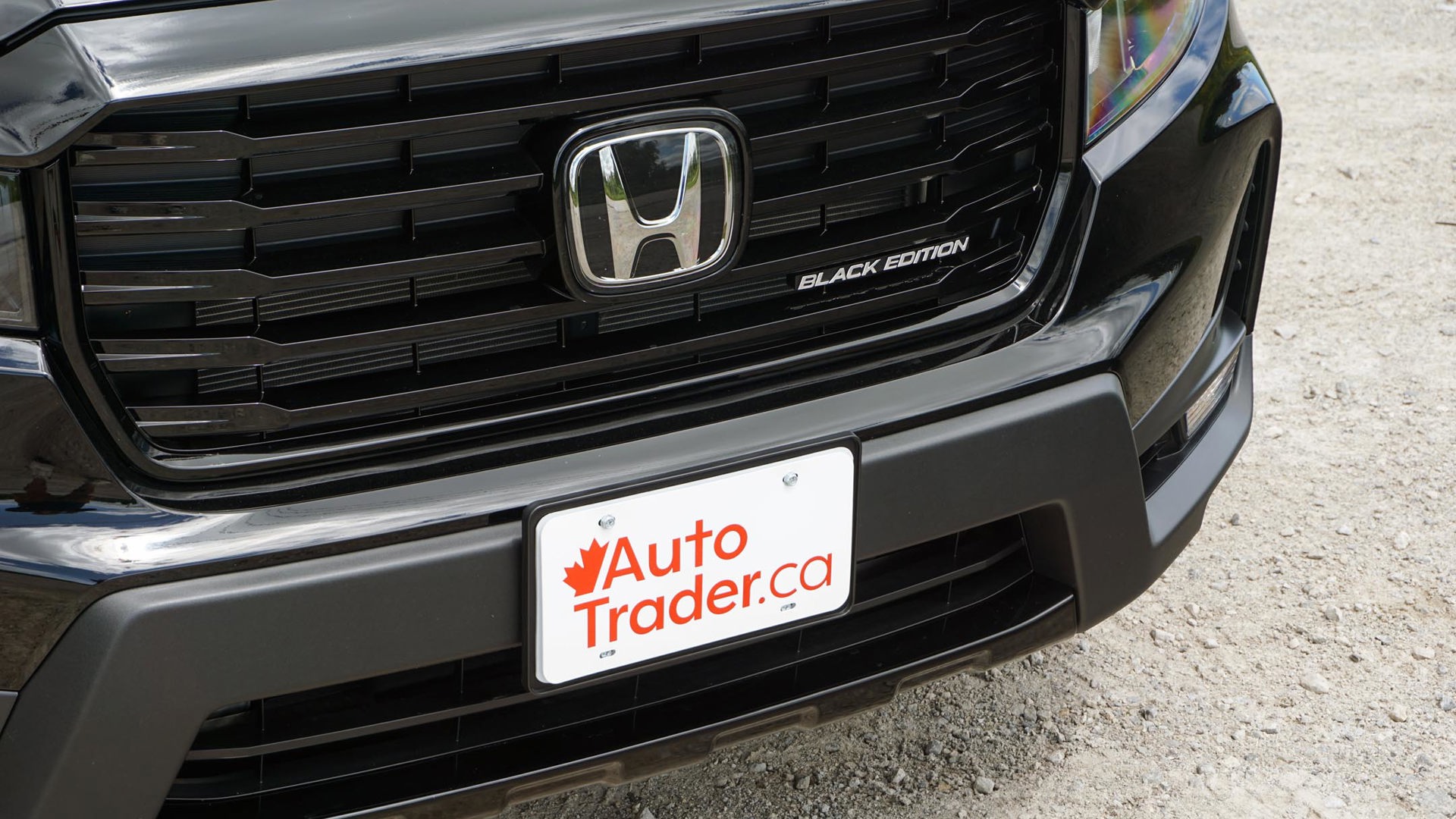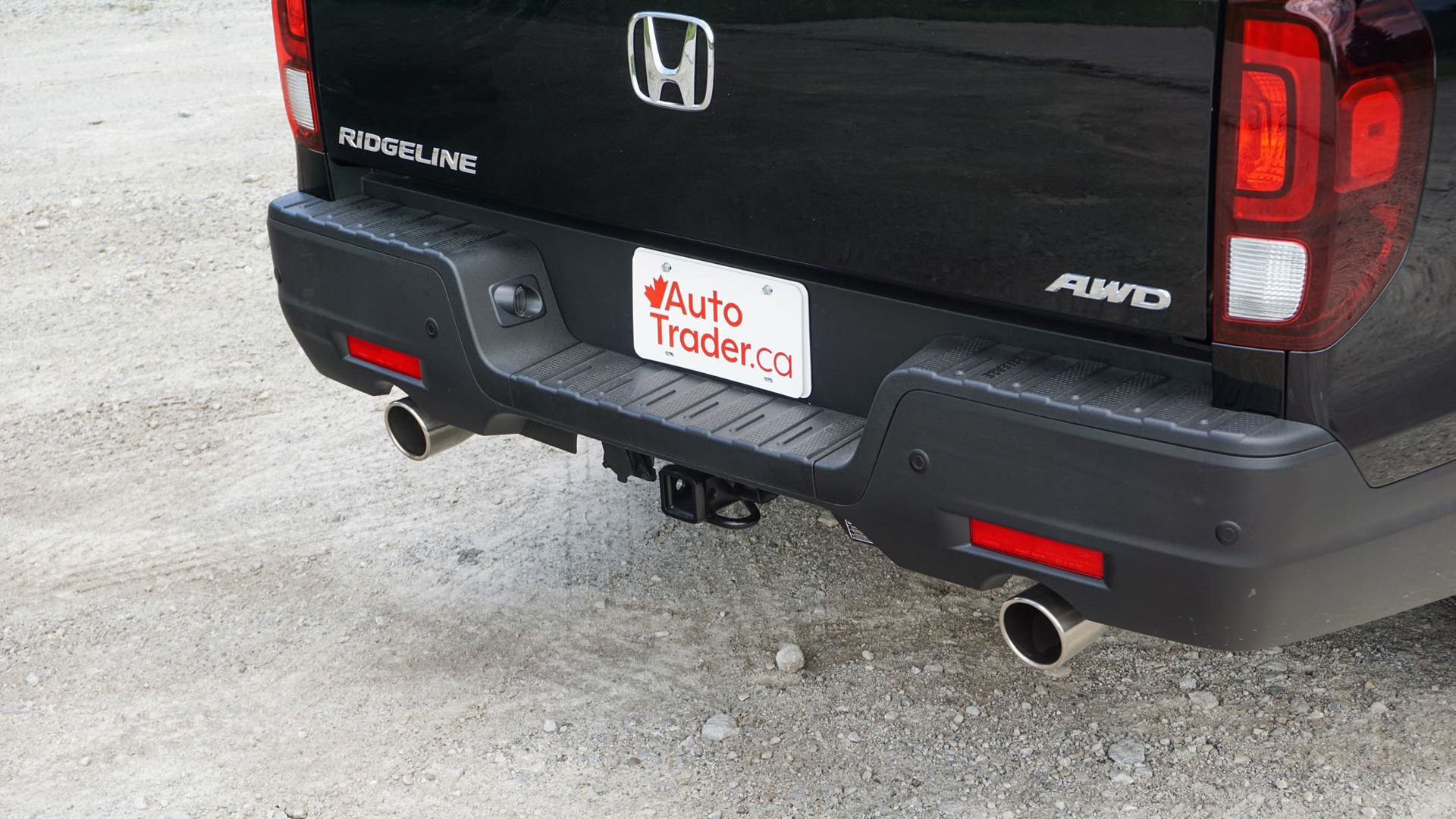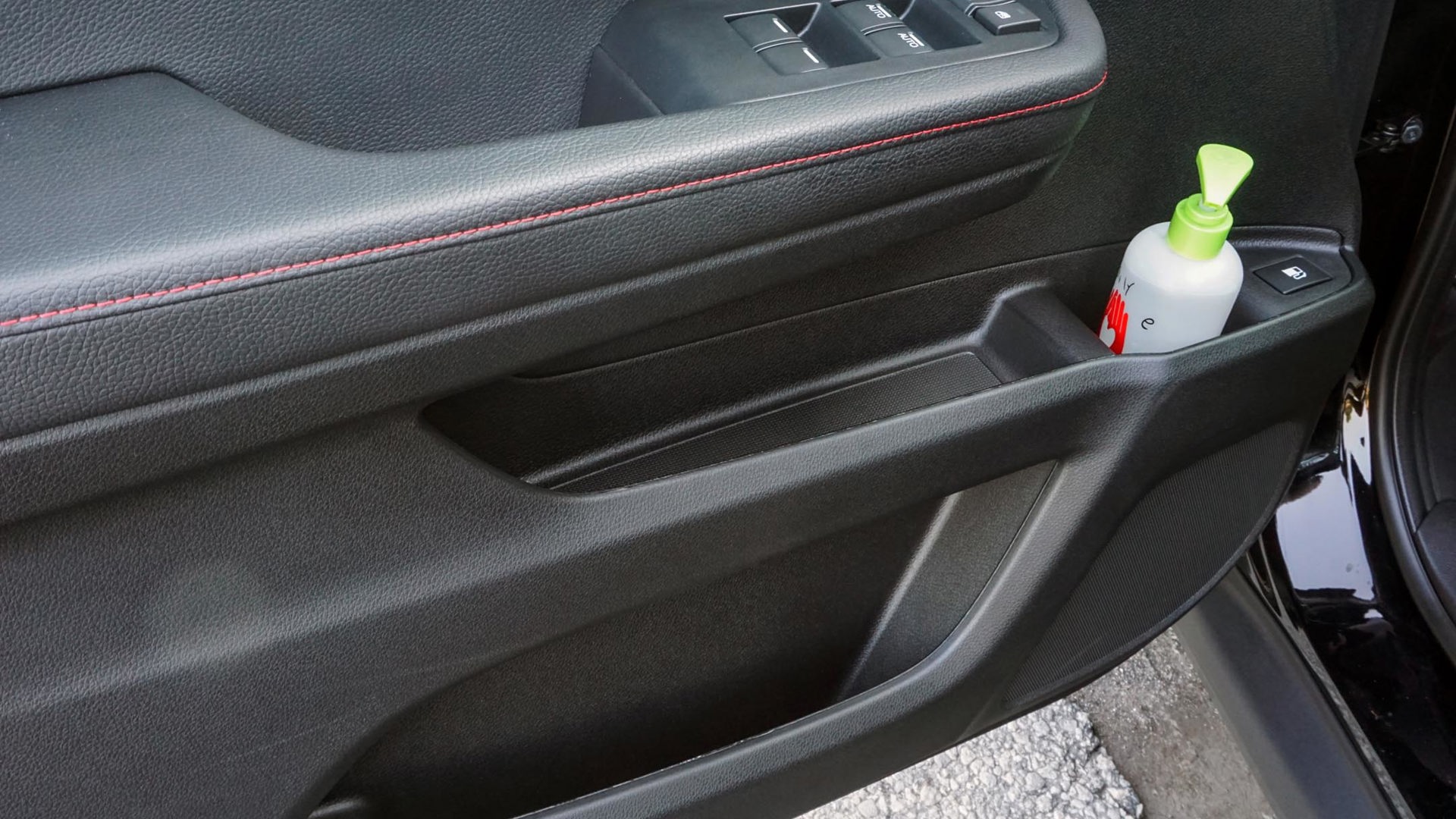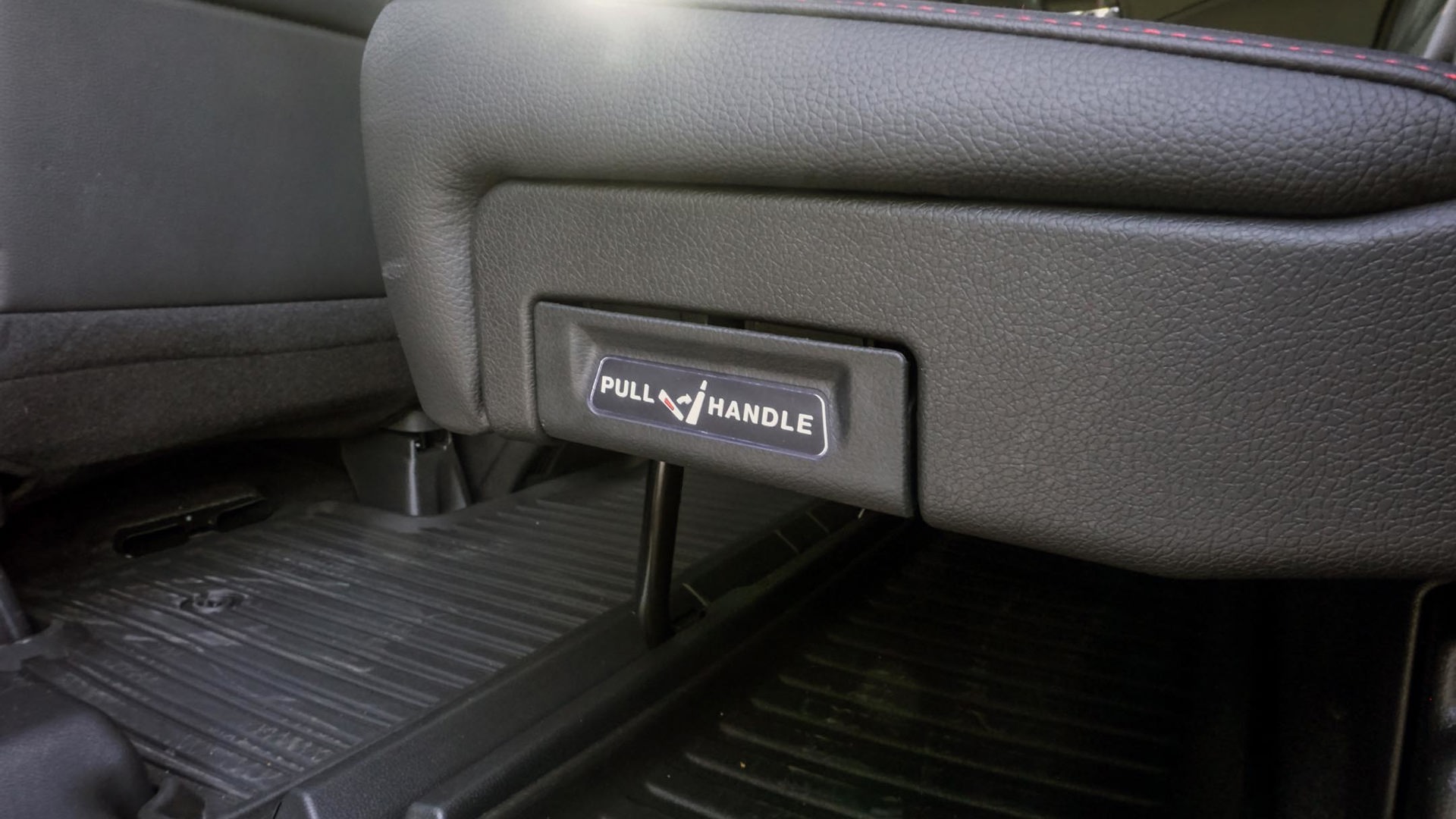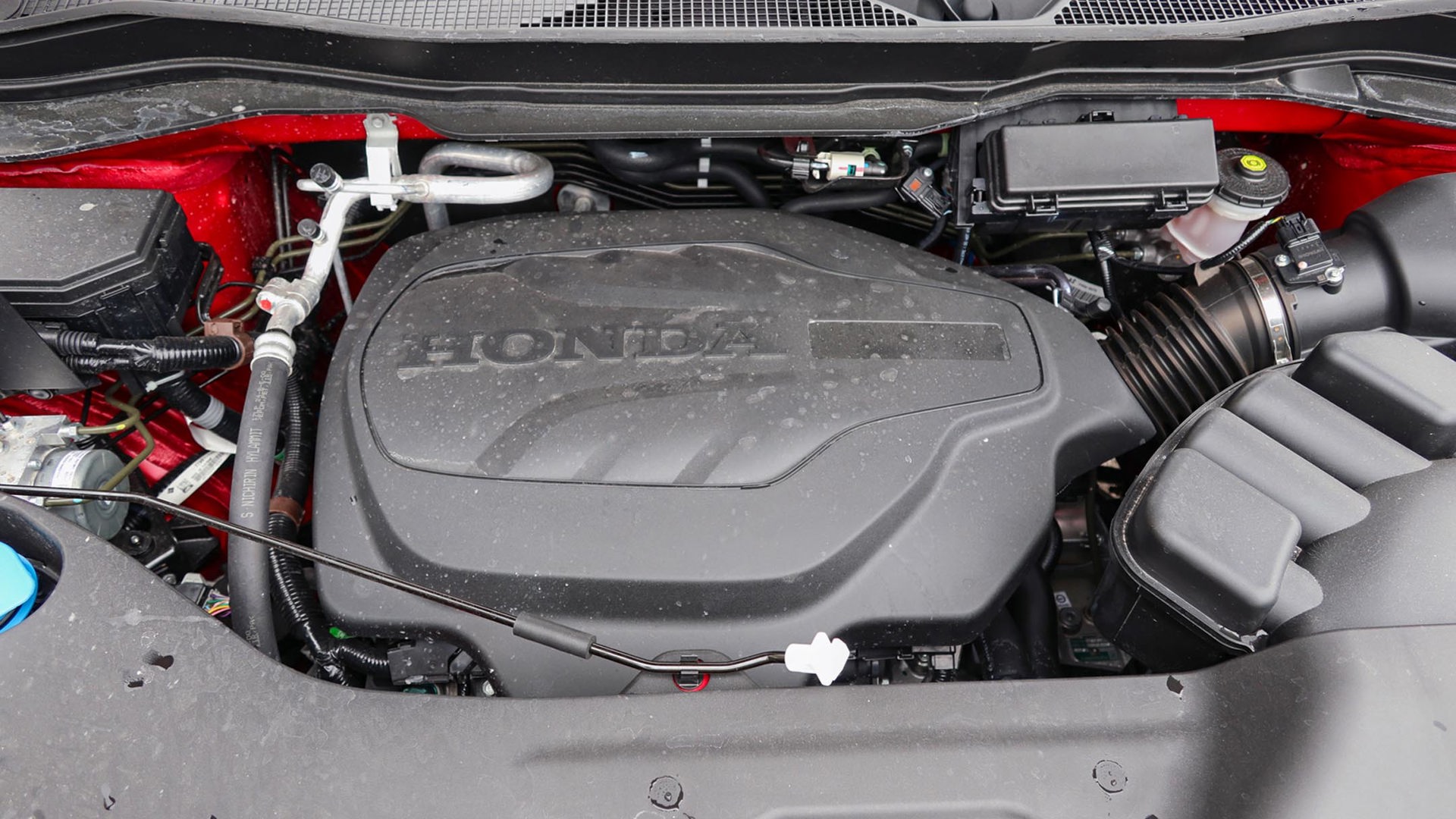The second-generation Honda Ridgeline first went on sale for the 2017 model year as a radically redesigned version of the brand’s unibody pickup.
Standard V6 power, available all-wheel drive, and a 2,268-kg (5,000-lb) towing capacity gave shoppers a solid taste of truck-like capability, while the Ridgeline’s innovative bed and flexible interior helped maintain the versatility they’d come to expect.
Look for front- and all-wheel drive variations, as well as premium features including an eight-inch touchscreen with both Android Auto and Apple CarPlay, a new satellite-linked navigation system, three-zone climate control, push-button start, remote engine start, a power sliding rear window, LED lighting, and more.
Subtle Changes
Under the hood is a 3.5L V6 and either six- or nine-speed automatic transmissions, depending on model year. (2017–19 used the former, 2020–22 the latter.) Output climbed to 280 hp – 30 more than the first-generation truck.
The second-generation Ridgeline also benefits from a vastly improved all-wheel drive (AWD) system that’s lighter, smarter, and more capable than its predecessor. It even picked up a trick from sister brand Acura’s system: the ability to overdrive an outside rear wheel by nearly three per cent, when required. Enabled by an active rear axle, this helps enhance cornering precision for a more car-like drive.
The new Ridgeline is also slightly larger than its predecessor in all dimensions. Mere millimetres separate the Ridgeline generations on width and height, though the new one is about 76 mm (three in) longer than its predecessor where both wheelbase and overall length are concerned.
Which Trim?
The Ridgeline LX was the entry trim, with Sport, EX-L, Touring, and Black Edition models climbing from modestly equipped to fully loaded. The second-generation Ridgeline underwent its most significant update for model year 2021. Compared to pre-update versions (2017–20), the 2021 Ridgeline got a bold new exterior design with more rugged looks and wheels. Onboard, the updated infotainment system got a physical volume knob, while contrast stitching became standard, and new accents were applied throughout.
A suite of safety and driver-assist systems is standard on all models, including features like forward collision warning with automatic emergency braking, lane departure warning and keeping systems, and adaptive cruise control.
What Owners Like
Reviewers and owners tend to agree on the Ridgeline’s most valuable assets: its comfortable and laid-back drive, clever and flexible storage capabilities, spacious cabin, and proven V6 powertrain.
What Owners Dislike
Some common complaints include its limited off-road and towing capabilities versus more traditional trucks, outdated infotainment system functions and graphics, and fussy driver assists that can be distracting at times.
Understanding the Safety Systems
The Ridgeline’s safety systems and driver aids are powered by camera and radar sensors mounted behind its windshield, grille, bumpers, and various other body panels. It’s important to read the owner’s manual to understand how these systems work, as well as their limitations. For instance, cameras and sensors can be blocked by mud, ice, or snow, temporarily disabling them, depending on conditions. You’ll need to learn the location of each of these sensors in order to keep them clean.
Avoid a used Ridgeline with damage to its body, bumpers, grille, or windshield, which can negatively affect the performance of these safety systems. Quality windshield wipers and fluid can help camera-based functions work more consistently in inclement weather, and keeping your Ridgeline’s battery fresh can help prevent safety system trouble, too.
Do not unplug and reconnect the Ridgeline’s battery in an attempt to fix trouble with any of its safety systems. If you notice a warning, error, or other trouble, have a trained professional investigate.
Wind Noise
Some owners have reported excessive wind noise from their second-generation Ridgelines, but most have not. On your test drive, be sure to quiet the cabin while travelling at highway speed, listening for whistling, roaring, or excessive wind noise. In some cases reported by owners, dealerships have been able to recalibrate power windows, or replace seals and tracks, to help quiet the offending noise.
Connectivity
All second-generation Ridgeline models came with Apple CarPlay and Android Auto, two must-have connectivity features for many shoppers. If you’re new to these features, you’ll appreciate their ability to make phone calls, send and receive messages, access navigation and music apps, and use voice assistants. Additionally, these systems are regularly updated with new features and improvements.
Both systems are very easy to set up, but make sure the truck is running (parked), and that you’re using a quality, data-capable USB cable to plug in your smartphone. From there, you’ll have to accept a prompt or two on your phone, and then the system automatically hooks up whenever you start the vehicle and plug your phone in.
Problems connecting with these systems are very often the result of using a poor-quality, old, incompatible, or damaged USB cable. Do not underestimate the importance of a good quality USB data cable when connecting to your Ridgeline.
Fuel Injector Problems
According to my research, the Ridgeline owner’s community has identified fuel injector failure as a potential pain point to be aware of as you shop. Some owners have reported issues with a rough idle, stalling, sporadic performance, check-engine lights, and hard starting. These are often symptoms of a not-uncommon fuel injector problem with this generation Ridgeline. Manufacturing debris or fuel-pump debris may clog one or more injectors downstream, negatively affecting performance.
On your test drive, be on the lookout for warning signs and a rough-running engine. Contact your dealership for more information, or if you have any concerns, about this warranty-covered issue. Honda released a technical service bulletin (TSB) to help technicians quickly remedy this problem, which seems to affect 2017 model-year units in particular. Honda also extended the warranty on these repairs.
A Very Important Test
One of the most important tests you can do on a used Honda Ridgeline you’re considering is to test out its backup camera multiple times throughout your test drive. If the camera image fails to display or flickers, you’ll want to proceed with caution.
According to this discussion, numerous owners have reported failing back-up camera displays as a sign of damage to a wiring harness that connects the Ridgeline’s two-way tailgate to the body of the truck. Over time, this wiring harness can become worn, exposing the wiring inside to the elements or severing the wiring altogether.
Though a failing back-up camera is a key warning sign of this problem, numerous owners have had wiring harnesses changed under warranty, as wiring harness damage can unleash a torrent of trouble. Using the photos in the link above as a guide, check the tailgate wiring harness for signs of damage or wear before you buy. Here’s some more information with pictures.
As this problem affects the operation of a safety system, Honda issued a recall for 2017 to 2019 model-year units, meaning Honda dealers will check and replace wiring harnesses on affected units at their cost, not yours.
You can see a full list of second-generation Honda Ridgeline recalls here, and check which (if any) apply to the Ridgeline you’re considering by visiting www.Honda.ca/recalls. Remember to contact Honda Canada for more information on recalls, and to register as the used Ridgeline’s new owner. This helps ensure you’ll receive future recall notifications in a timely manner.
Transmission Troubles
On your test drive, quiet the Ridgeline’s cabin and focus on the operation and behaviour of its transmission. Note the engaged drive mode you are using, as different drive modes may alter the transmission’s operation. For this test, be sure you’re using the normal mode.
A healthy transmission will shift gears smoothly and quietly at light throttle, and the process should be virtually undetectable from the driver’s seat. At full throttle, a healthy transmission should shift with a clean, quick, and positive action that’s free of vibrations slamming or slipping.
Note the transmission’s behaviour when slowing down from cruising speed to a stop. Downshifts should be all but imperceptible.
Where appropriate, slow the Ridgeline quickly from 70 km/h to about 10 km/h, but release the brakes before stopping and apply heavy throttle instead – as if you’ve nearly stopped for a red light that turns green again. This test can coax an unbecoming slam or lurch from troublesome transmissions, so take note of the Ridgeline’s performance here. Here’s some more reading. To help protect yourself from potential transmission trouble, be sure to accelerate fluid change intervals, to seek out a Ridgeline regularly serviced in a dealer setting, and to opt for any extended warranty coverage available.
Though most Ridgeline owners did not report transmission problems, test-driving shoppers are advised to be on the lookout as trouble can have various causes and some owners report multiple failed attempts to fix them. Dealers may perform fluid changes, software updates, or even transmission replacements in some cases as a fix.
Note that Honda did release at least two TSBs to help dealer technicians fix transmission trouble.
Soggy Carpets
Some Honda Ridgeline owners have reported water leaks that leave them with a musty-smelling, damp, and perpetually-humid cabin. Most have not.
Water leaks can come from a variety of sources; none are a good time to fix. That’s why it’s very important you check the used Honda Ridgeline you’re considering for water leaks before you buy.
According to my research, several owner’s communities have documented issues with water entering the cabin via a poorly-sealed seam in the frame behind the Ridgeline’s back seat. Other water leak sources include the sunroof and its drainage system, bad window seals, and the air conditioner.
To protect yourself from a bad time, approach any used Ridgeline you’re considering assuming it’s got a water leak issue until you have proof to the contrary. Carefully check the cabin for soggy carpeting, especially near the outer edges and corners of the floor, and beside the door openings. Pull away trim and press your hands into the carpeting, looking for signs of dampness. Carefully inspect the area beneath the rear seat as well. Use your nose here, too, sniffing for signs of mould, rust, or algae.
At any sign of water leakage in the Ridgeline you’re considering, you’re likely best to move to another unit.
Safety Ratings
IIHS: Top Safety Pick (2019)
NHTSA: 5/5 Stars (2019)










